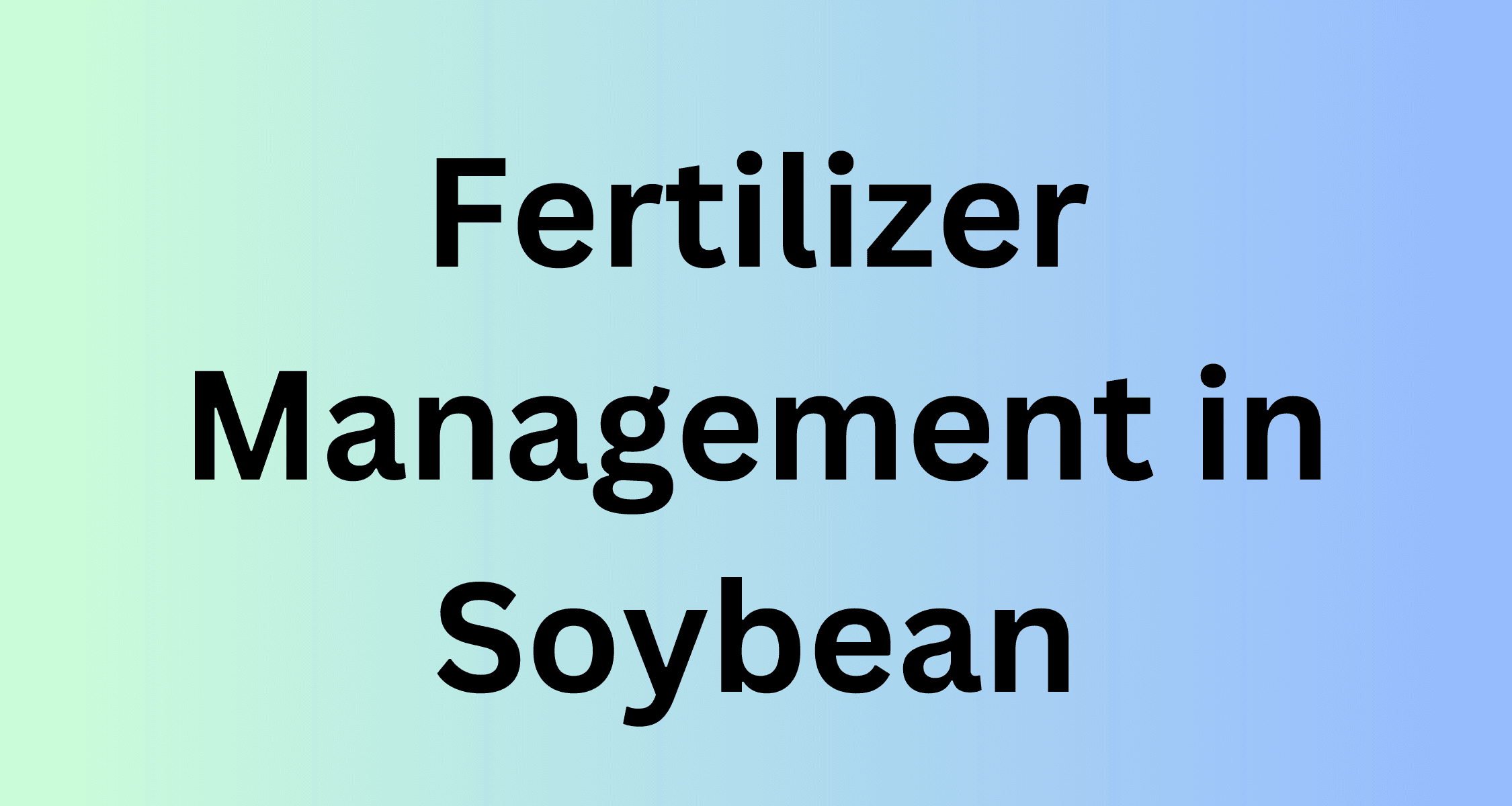Fertilizer Management in Soybean

Being a major source of protein and oil, soybean farming holds a significant place in Indian agriculture. To achieve a good yield, it is essential to adopt the right fertilizer management practices. Fertilizer management not only supports plant growth but also plays a crucial role in maintaining soil fertility. Using the correct amount of fertilizers at the right time increases crop yield and quality, while also enhancing the plant's disease resistance. This reduces the likelihood of disease and pest infestations in the crops. Additionally, stronger roots help reduce the problem of plants falling over. In this post, we will discuss the importance of fertilizer management in soybean crops, identify the necessary nutrients, and explore the proper methods for their application.
Problems Caused Due to Lack of Nutrients in Soybean Crop
- Nitrogen Deficiency: This leads to yellowing leaves and stunted plant growth.
- Phosphorus Deficiency: Results in stunted growth, purple leaves, and hindered root development. Phosphorus is essential for root growth, energy transfer, and seed production.
- Potassium Deficiency: Causes yellowing, and necrosis in leaves, and hampers plant growth. Potassium is crucial for water regulation, photosynthesis, and stress tolerance.
- Sulphur Deficiency: Symptoms include yellowing leaves, stunted growth, and reduced nodulation. Sulphur is vital for protein synthesis and stress tolerance.
- Iron Deficiency: Leads to yellowing of leaves with green veins, stunted growth, and chlorosis. Iron is important for chlorophyll synthesis and photosynthesis.
- Zinc Deficiency: Results in stunted growth, chlorosis, and reduced root development. Zinc is essential for enzyme activity and growth regulation.
- Manganese Deficiency: Symptoms include chlorosis, necrosis, and stunted growth. Manganese is important for photosynthesis and enzyme activity.
Fertilizer Management in Soybean Crop
- Before the final plowing, mix 6 tons of well-decomposed cow dung or compost per acre of field.
- While preparing the field, mix 28 kg of urea, 40 kg of muriate of potash, 200 kg of single super phosphate, and 12 kg of bentonite sulfur per acre.
- Use potash only if there's a deficiency.
- Incorporate 4 kg of 'DeHaat Starter' per acre during field preparation.
- For better plant growth and yield, spray 3 kg of urea mixed in 150 liters of water 60 and 70 days after sowing.
- Apply 80 kg of gypsum per acre for a good yield.
Things to Keep in Mind While Using Fertilizers for Crops
- Soil Testing: Before applying fertilizers, it's essential to test the soil to determine the nutrient levels and pH. This helps in selecting the right type and amount of fertilizers needed for the crop.
- Type of Fertilizers: Different crops require different types of fertilizers based on their nutrient needs. Selecting the correct type of fertilizer is crucial. For more details, consult agricultural experts.
- Quantity of Fertilizers: The amount of fertilizer should be based on the crop's nutrient needs and soil test results.
- Proper Timing: Fertilizers should be applied at the right time for better yield. Apply the appropriate amount during field preparation and consider balanced applications 2-3 times after sowing.
- Method of Application: Fertilizers can be applied in various ways. The method should be chosen based on the crop's nutrient needs and soil type.
- Storage: To ensure the effectiveness and safety of fertilizers, store them properly. Keep them away from direct sunlight and store them in a cool, dry place.
Effects of Excessive Use of Fertilizers
- Soil Degradation: Excessive use of fertilizers can lead to soil degradation, reducing soil fertility and productivity. Overuse of nitrogen-based fertilizers can acidify the soil, leading to nutrient and mineral deficiencies.
- Water Pollution: Overuse of fertilizers can cause excess nutrients to leach into nearby water bodies, leading to eutrophication and increased water pollution. This can promote harmful algal blooms and reduce oxygen levels, harming aquatic life.
- Adverse Health Effects: Excessive fertilizer use can pose health risks to farmers and consumers. High exposure to nitrogen-based fertilizers can cause respiratory issues, skin irritation, and other health problems.
- Increased Agricultural Costs: Overuse of fertilizers can increase the cost of crop production.
- Loss of Biodiversity: Excessive fertilizer use can reduce biodiversity by harming beneficial soil microorganisms and insects. Over time, this can degrade soil health and reduce productivity.
What nutrients do you use in your soybean crop? Share your answers and experiences with us in the comments. For more information like this, follow the 'Krishi Gyan' channel right away. Also, don't forget to like and share this post so that other farmer friends can benefit from this knowledge.
Frequently Asked Questions (FAQs)
Q: What fertilizer should be used in soybeans?
A: It is recommended to use a balanced amount of nitrogen, phosphorus, and potassium in soybean crops. Additionally, depending on soil conditions, micronutrients like zinc, boron, and sulfur may also be needed. It's best to conduct a soil test to determine the precise fertilizer requirements for your soybean crop.
Q: When should fertilizers be applied in soybeans?
A: The timing of fertilizer application depends on the type of fertilizer used. Well-decomposed organic manure should be applied 2-3 weeks before sowing. Green manure should be used 3-4 weeks before sowing to allow time for decomposition. Additionally, some crops may require fertilizer application 30 days after sowing and again 45 days later.
Q: What should be applied to enhance soybean growth?
A: To boost soybean growth, nitrogen-based fertilizers like urea, ammonium sulphate, or ammonium nitrate should be used. Phosphorus and potassium are also essential nutrients for soybean development. Use diammonium phosphate or muriate of potash to fulfill these requirements
जारी रखने के लिए कृपया लॉगिन करें

फसल चिकित्सक से मुफ़्त सलाह पाएँ
